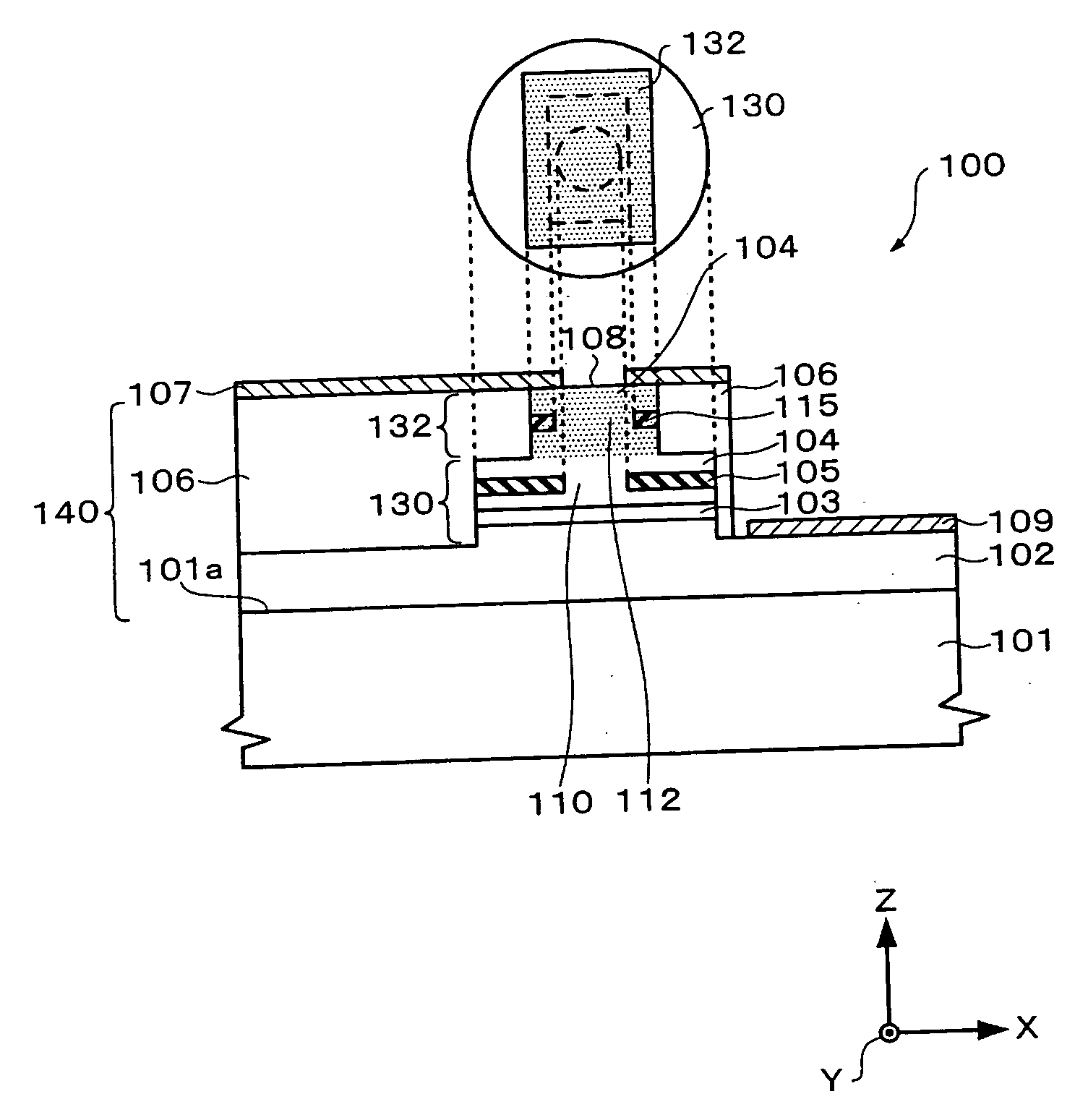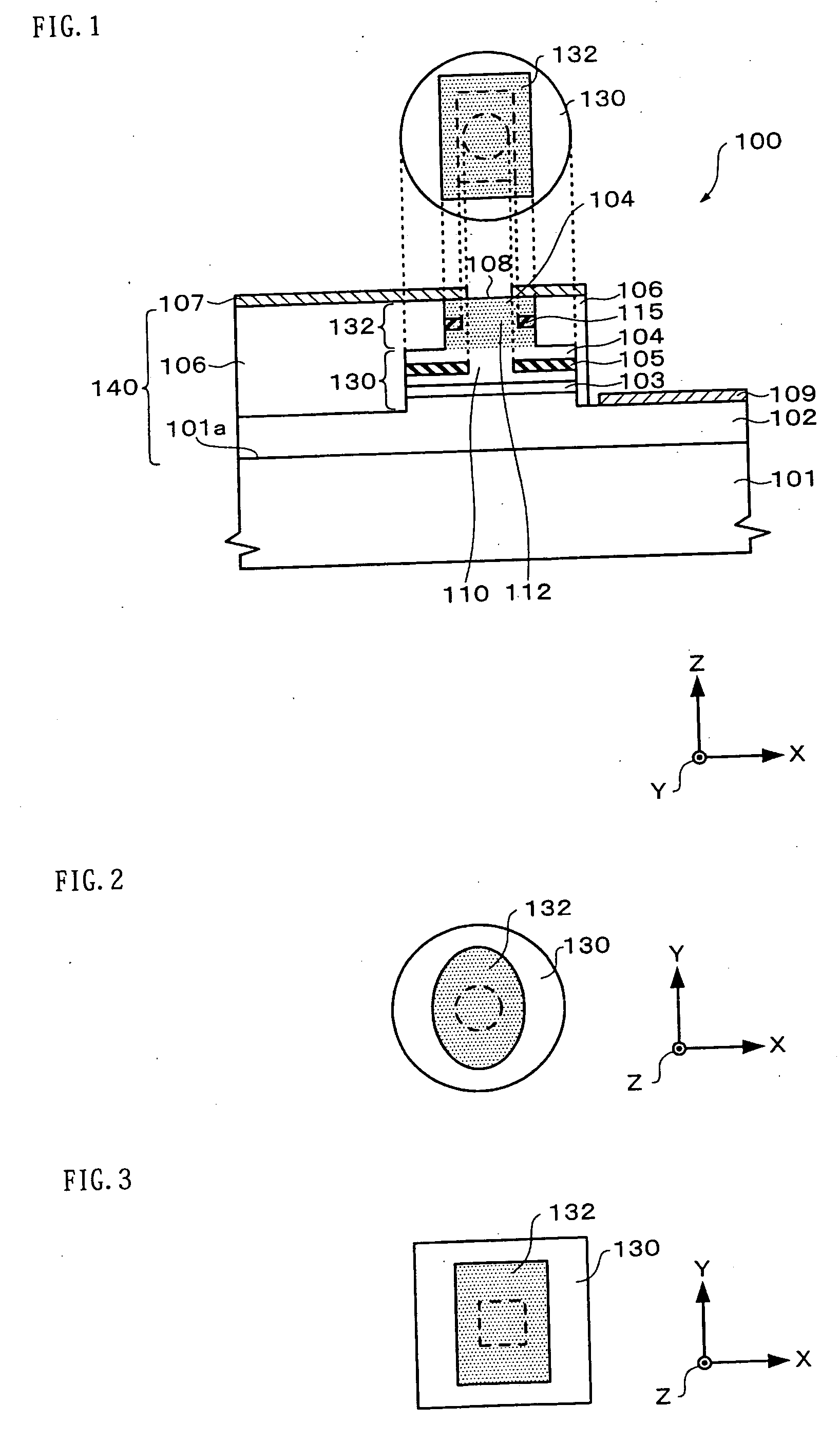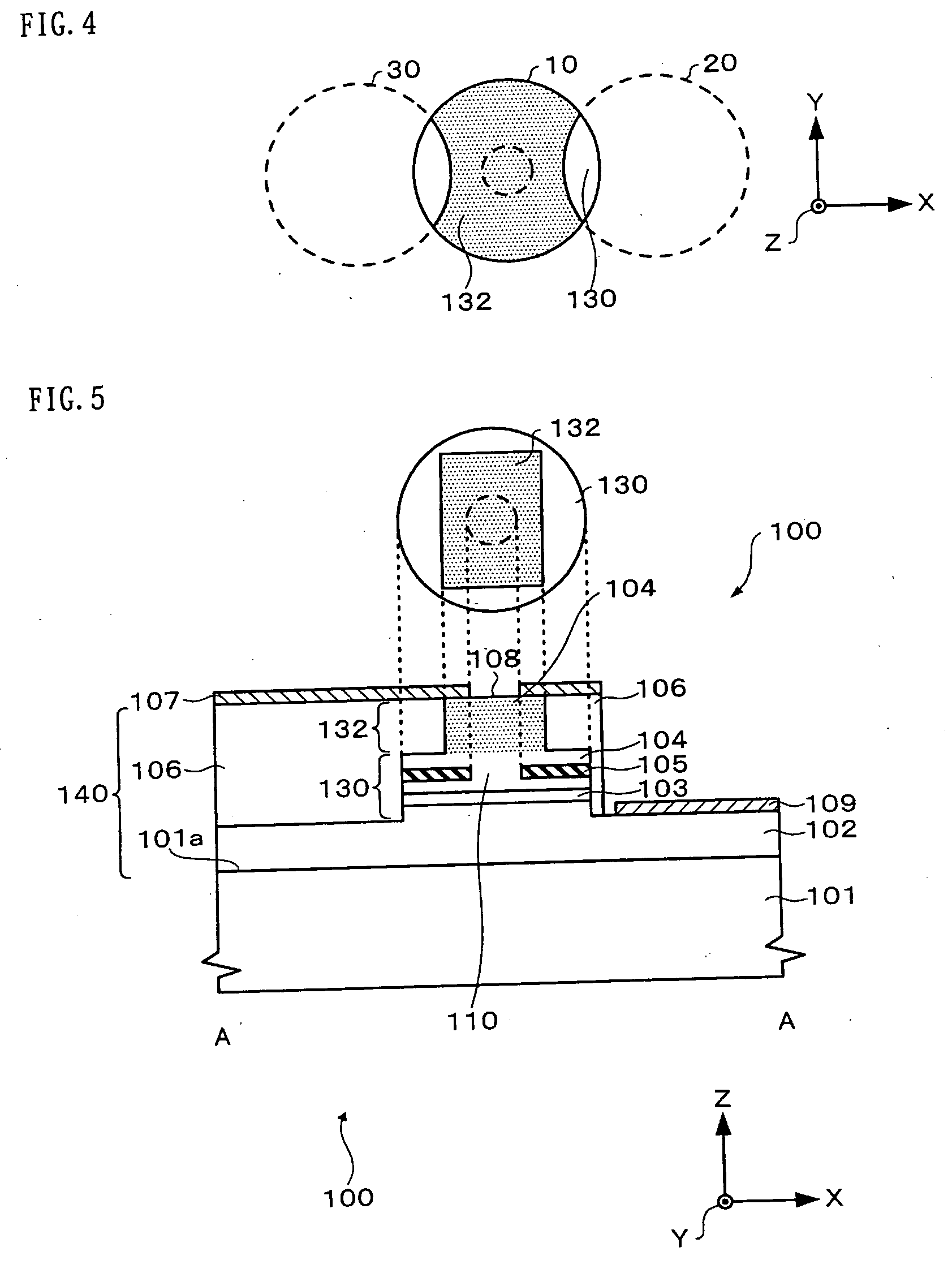Surface-emitting type semiconductor laser and method for manufacturing the same
a surface-emitting type, semiconductor laser technology, applied in semiconductor lasers, laser details, electrical equipment, etc., can solve the problems of difficult control of polarization planes of surface-emitting type semiconductor lasers, and inability to uniformly distribute current density, so as to achieve high reliability and achieve the effect of not lowering energy usage efficiency
- Summary
- Abstract
- Description
- Claims
- Application Information
AI Technical Summary
Benefits of technology
Problems solved by technology
Method used
Image
Examples
first exemplary embodiment
1. First Exemplary Embodiment
1-1 Device Structure
[0054]FIG. 1 is a schematic of a surface-emitting type semiconductor laser (hereinafter “surface emitting laser”) 100 in accordance with a first exemplary embodiment of the present invention. FIG. 2-FIG. 4 are schematics of major portions of the surface-emitting laser 100 of the first exemplary embodiment.
[0055] The surface emitting laser 100 according to the first exemplary embodiment of the present invention includes a semiconductor substrate (a GaAs substrate in accordance with the present exemplary embodiment) 101, a vertical-cavity resonator 140 (hereinafter “resonator 140”) formed on the semiconductor substrate 101, a first electrode 107 and a second electrode 109. The resonator 140 includes a first mirror 102, an active layer 103, and a second mirror 104.
[0056] Next, each of the compositions of the surface-emitting laser 100 will be described.
[0057] The resonator 140 may be formed, for example, from a first mirror 102 that...
second exemplary embodiment
2. Second Exemplary Embodiment
2-1 Device Structure
[0105]FIG. 14 is a schematic of a surface emitting laser 200 in accordance with a second exemplary embodiment of the present invention. FIG. 15-FIG. 17 are schematics of major portions of the surface-emitting laser 200 in accordance with the second exemplary embodiment. The same reference numerals are appended to components that have substantially the same functions as those of the surface-emitting laser 100 in accordance with the first exemplary embodiment, and their detailed description is omitted.
[0106] As shown in FIG. 14, the surface-emitting laser 200 of the present exemplary embodiment includes a semiconductor substrate (a GaAs substrate in the present embodiment) 101, a resonator 140 formed on the semiconductor substrate 101, a first electrode 107, and a second electrode 109. The resonator 140 includes a first mirror 102, an active layer 103, and a second mirror 104.
[0107] The second mirror 104 includes a part of a first ...
PUM
 Login to View More
Login to View More Abstract
Description
Claims
Application Information
 Login to View More
Login to View More - R&D
- Intellectual Property
- Life Sciences
- Materials
- Tech Scout
- Unparalleled Data Quality
- Higher Quality Content
- 60% Fewer Hallucinations
Browse by: Latest US Patents, China's latest patents, Technical Efficacy Thesaurus, Application Domain, Technology Topic, Popular Technical Reports.
© 2025 PatSnap. All rights reserved.Legal|Privacy policy|Modern Slavery Act Transparency Statement|Sitemap|About US| Contact US: help@patsnap.com



